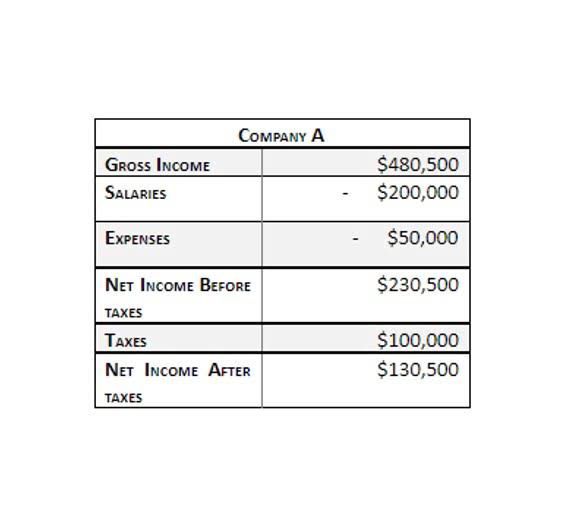
There are no additional guides to separate inventory into groups, other than the items having to be similar. What net realizable value this means is a matter of professional judgment and solid knowledge of the business. US GAAP refers to a different term, stipulating we have to show assets at the lower of cost and market value.
Lower of cost or NRV (new rule)
- However, if the company’s property is in a less desirable location or requires significant renovation, the Net Realizable Value could be substantially lower once these additional costs are factored in.
- Whether the total NRV adjustment the company will recognize in its accounting records will include this additional amount is a matter of management’s professional judgment and knowledge of the business.
- By applying this rule, companies ensure their asset valuations remain conservative and aligned with current market conditions.
- When it comes to estimating the ending value of an inventory or accounts receivable, what accountants use for a conservative estimate or valuation method is to compute for the Net Realizable Value (NRV).
- Under the market method reporting approach, the company’s inventory must be reported on the balance sheet at a lower value than either the historical cost or the market value.
- For businesses that hold inventory for long periods of time, these inventories will become obsolete, have a lower market value, or deteriorate over time.
Cost accounting is part of the managerial accounting of a company that aims to capture the production cost of a manufacturing intensive company. In 2015, the Financial Accounting Standards Board (FASB) issued an update on the inventory accounting requirements of companies that they should not use the LIFO (Last In First Out) method. Thus, the Generally Accepted Accounting Principle (GAAP) states that the business must record the inventory using the Lower of Cost or Mark (LCM) method of valuation. In the Balance Sheet of the company, the accounts that will have the highest possibility of overstating the assets https://www.bookstime.com/ is the Inventory and the Accounts Receivable. The practice of avoiding the overstatement of assets is called accounting conservatism.
Example Calculation
I want to show you how you might approach an NRV analysis of inventory in a real-life situation. As we assess as part of our annual close process, let’s look at the balance as of 31 December 2020. An alternative is to separate our inventory into groups of cash flow similar items and calculate the Net Realizable Value on an aggregated basis. It is important to note that we might have some ‘good’ items offset the effect of such with NRV issues by doing so.
Carrying Amount vs. Net Realizable Value

For anyone involved in accounting or finance, grasping the concept of NRV is essential for accurate asset valuation and financial analysis. An important aspect of NRV’s impact on inventory is its ability to identify obsolete or slow-moving stock. When inventory items are assessed for their realizable value, those unlikely to sell at their original prices become apparent. This prompts businesses to consider markdowns or discounts to move such inventory, aligning the recorded value with market realities. This proactive approach helps maintain a lean inventory and optimizes storage and reduces holding costs. In practice, the application of NRV can vary depending on the industry and the type of inventory.
It’s a move to reflect a more realistic inventory value on financial statements, ensuring they portray an accurate financial position of the business. Consider a fashion retailer who’s navigating the fast-paced turn of seasons and trends—SleekStyles Inc. At the close of spring, they find themselves with an excess inventory of winter coats originally valued at $200,000. Current trends and customer preferences dictate a heavy discount to offload these coats, setting the expected selling price at $150,000. When recording these costs, meticulous documentation is key for accuracy and for satisfying any audit inquiries. Remember, any oversight or error in calculating these costs can skew the NRV and lead to significant implications for financial reporting and decision-making.
- NRV is a conservative approach to accounting, which is in line with the principle of conservatism.
- On the other hand, LCNRV narrows the focus solely on comparing the historical cost to the NRV.
- This proactive approach helps maintain a lean inventory and optimizes storage and reduces holding costs.
- This rule requires that assets be recorded at the lower of their historical cost or market value, with NRV often serving as a proxy for market value.
- Therefore, the net realizable value of the inventory is $12,000 (selling price of $14,000 minus $2,000 of costs to dispose of the goods).
- On the other hand, US GAAP does not allow for such a reversal of write-downs once recognized.
These adjustments are necessary to ensure that the financial statements accurately reflect the true value of the assets and liabilities of the company. From an accountant’s perspective, the challenges in valuation often stem from the need to balance these two measures. Fair Value is a market-based measurement, not an entity-specific measurement, and therefore it does not take into account the specific circumstances of the entity holding the asset. This can lead to situations where the Fair Value of an asset is significantly different from its Net Realizable Value. NRV plays a pivotal role in inventory assessment, influencing various aspects of business operations and financial reporting. Its impact is felt across different levels of an organization, from accounting to management, and it is a critical factor in maintaining the integrity of financial statements.

The term market referred to either replacement cost, net realizable value (commonly called “the ceiling”), or net realizable value (NRV) less an approximately normal profit margin (commonly called “the floor”). In brief, LCM allowed accountants to measure inventories at the lower of historical cost or market value, where market value could mean replacement cost, net realizable value (NRV), or NRV less a normal profit margin. In a real-world scenario, let’s unpack how a company might compute the NRV for its accounts receivable. TechGadgets Inc., has an outstanding AR balance that needs careful examination to gauge its creditworthiness. With an anticipated invoice for $5,000 from a customer, TechGadgets Inc. must factor in a collection cost of $200. The Net Realizable Value (NRV) is the amount we can realize from an asset, less the disposal costs.

If the market price was lower than NRV minus a normal profit margin, you had to use NRV minus a normal profit margin. Analysts use NRV to see if companies are following accounting standards and properly valuing their assets. Then we use VLOOKUP to bring in the Quantity and Net Sales Value from Q1 2021, to calculate an average Net Sales Price. It is essential to take the Net Sales instead of Gross Sales, as the discount is a part of our cost to sell the items. We will not consider delivery costs, as our clients organize the delivery for themselves.
Inventory Accounting Assumptions

Net Realizable Value, on the other hand, is the estimated selling price in the ordinary course of business minus the estimated costs of completion and the estimated costs necessary to make the sale. In the realm of accounting and finance, the concepts of Fair Value and Net Realizable Value are pivotal in understanding the true worth of an asset. While both metrics aim to measure the value of an asset, they approach this task from different angles and under varying assumptions.